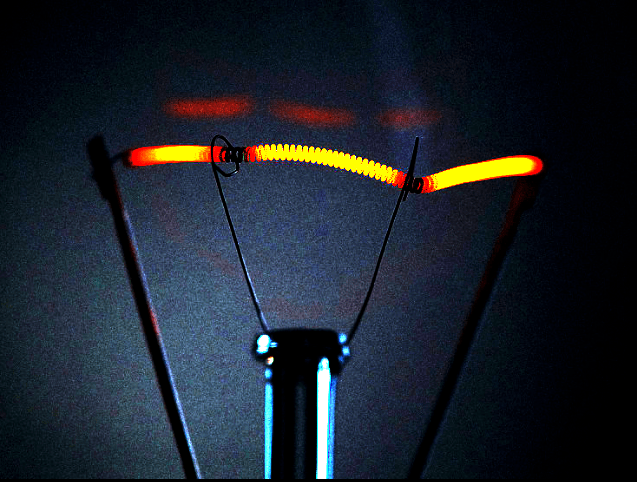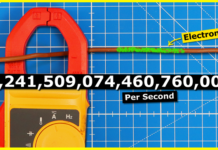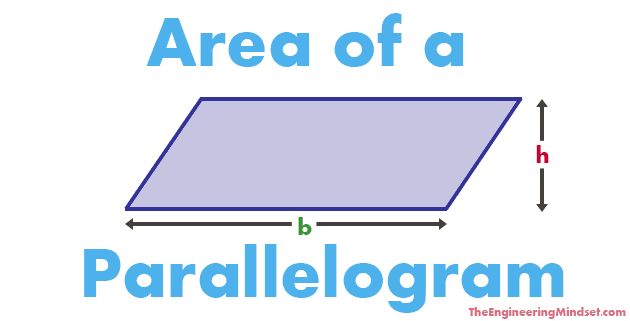What is resistance?
Resistance is the opposition to the flow of electrons in a circuit through a conductor. If you need to refresh on how electricity works, click here to read the tutorial first.
In the illustration below, electrons flow in a synchronized and orderly manner.
In reality the atoms will not be aligned so well and they will also vibrate tiny amounts causing electrons to collide. As the electrons collide they convert their kinetic energy into heat and light. That’s how old incandescent filament bulb’s work.

Some materials simply do not have enough atoms to allow electrons to flow. Other materials do not have enough free electrons available to allow electrons to flow. These are not good conductors of electricity.
Measurement of resistance
Resistance is measured in the SI units of Ohm’s which is represented with the Greek letter omega Ω. Materials are tested for their level of resistance by measuring the amount of current that passes across the conductor. An instrument for measuring resistance is called an ohmmeter.
Cause of resistance
An ideal conductor would be made from a material which posed no resistance to the flow of electrons. In the real world though, all materials will give some level of resistance, the level of resistance can also vary within the conducting material used. Some of the things which vary a conductors level of resistance are listed below:
- The cross sectional area of the conductor
- The length of the conductor
- The material of the conductor
- The temperature of the conductor





















great video
What is the difference between resistance and impedance?